Environmental Science - Chapter 2
1/31
Earn XP
Description and Tags
Fossil Stuff
Name | Mastery | Learn | Test | Matching | Spaced |
|---|
No study sessions yet.
32 Terms
Fossil
The preserved remains of a once living organism.
Fossil Record
Made up of fossils that have been found with their relative age.
How is Fossil Records used?
Scientist uses fossil records as evidence of evolution and variation of biodiversity overtime.
And shows that:
Overall increase in complexity of organisms over time.
Increase in species diversity.
How organisms went extinct, evolved or changed.
Shows mass extinctions in earths pass.
Mass Extinction
A wide spread and rapid decrease in the biodiversity on earth.
Relative Dating
A descriptive way of dating the age of fossils, and the age can be determined by the layer that are found in.
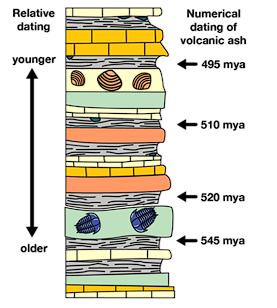
Numerical Dating
A numerical way of dating the age of fossils, and uses radioactivity of isotopes found within the fossils to determine its age.
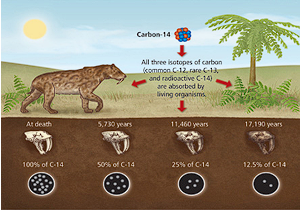
Link mass extinction and biodiversity.
Can lead to a rapid decrease in biodiversity, due to many loss of species.
It can also lead to a rapid increase in biodiversity following the event, this is because species can occupy an environment that the extinct species once occupied.
There is less competition for food, shelter and mates allowing the surviving species to rapidly produce.
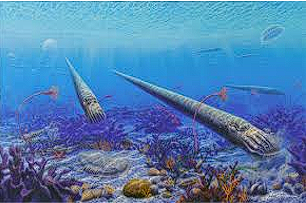
Ordovician-Silurian Mass Extinction
Date: Around 488 – 443 million years ago.
Organisms that existed at the time:
Trilobites, cephalopods, jawless fish, algae and unicellular plants.
Most of these organisms lived in the water.
Mass extinction trigger:
The movement of the large mass Gondwana caused sea levels to rise and fall repeatedly, this eliminated many habitats.
Climate changed which caused a mass extinction to occur as the climates cooled and water levels became lower. This led to around 85% of species being wiped out.
What came after:
The changes to earth lead to the formation of new ecosystems and habitat allowing for the rise of new organisms such as jawed fish and land organisms.

Late Devonian Extinction
Date: Around 416 – 359 million years ago.
Organisms that existed at the time:
Land organisms such as ferns and insects and fishes also evolved limbs to become the first vertebrates. There were a large diversity of fish in the ocean.
Mass extinction trigger:
Tropic seas had limited oxygen.
There were a number of factors that could have caused this extinction such as meteor, comet, global warming, sedimentation or nutrient run off. Many tropical fish went extinct.
What came after
Reptiles, seed plants, flying insects and other organisms such as sharks and ammonites
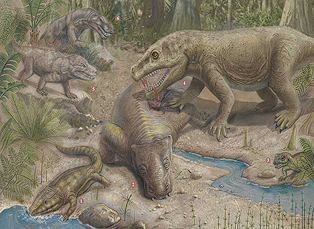
Permian Triassic Extinction
Date: Around 299 – 251 million years ago.
Organisms that existed at the time:
Land organisms such as reptiles and amphibians and ancestors of mammals and dinosaurs
There were seeded ferns, tree ferns and other plants.
Mass extinction trigger:
No known cause of the Permian Triassic extinction, but possibly climate change, volcanic activity, asteroids strikes or microbes
This led to the death of 95% of species including marine organisms, insects, vertebrates and plants.
What came after
Dinosaurs and mammals began to appear.
Jurassic Extinction
Date: Around 251 – 199 million years ago.
Organisms that existed at the time:
Dinosaurs and small land mammals.
Conifers, ferns and flowering plants.
Mass extinction trigger:
Volcanic activity which released gases into the air changing the climate. The release of methane and basalt into the air caused a decrease in oxygen that suffocated life. This led to the death of many dinosaurs.
Climate change caused the change in sea levels and gases also brought changes to the pH of the water. This led to the death of many marine organisms.
What came after:
Mammals, birds and flowering plants and many insect species.
Cretaceous-Tertiary Extinction
Date: Around 65 million years ago.
Organisms that existed at the time:
Dinosaurs and small land mammals.
Conifers, ferns and flowering plants.
Mass extinction trigger:
A major asteroid hit earth which sent huge amounts of dust and soot around the planet which blocked sunlight. This led to the collapse of many ecosystems.
This led to the death of the dinosaurs.
What came after:This led to the rise of mammals including rodents, primates and small reptiles.
The 6th Mass Extinction
Scientist are now starting to call the rapid loss of species we see today the sixth mass extinction.
The natural background rate of extinction is the standard rate of extinction based on earths history. The natural background rate of extinction is 1 species per every one million species per year.
This mass extinction is caused by human activity from habitat loss due and induced climate change.
This amount of extinction is occurring 100 – 10,000x faster than the natural background levels of extinction.
We could reach mass extinction of species within 250 to 12,000 years which is much faster than any mass extinction before it.
There are currently more then 46,300 species threatened with extinction.
Environmental Variation
Changes to the environment over short, medium and long-term time scales produce a number of outcome for species.
Short Term Changes include:
Fire
Volcanic Eruptions
Droughts
Bushfires
Medium Term change include:
El Nino Southern Oscillations
Long Term Changes include
Long term population isolation
Tectonic plate movements
Evolution
Effect of fire:
Wipe out populations of both plants and animals.
Can kill mature trees, therefore removes the ecosystem’s vegetation diversity and reduce food resources for wildlife.
Loss of mature trees = Fewer living spaces for birds and other organisms requiring it.
Destroys soil organisms and reduce soil fertility.
Effects of Volcanic Eruption
Can completely destroy ecosystems that are close to the volcano.
Lots of plants are destroyed over a wide area.
Lava flow will kill animals.
Note: The soil is cert rich, allowing plants to regrow after an eruption.
Droughts
Prolonged periods of dryer then normal conditions, and where there is limited rainfall.
Effects of a drought
Limits plant growth
Limited moisture in soil
Increase in fire and alters progress such as carbon and nutrient cycle.
Impact animal migration
Disrupt food webs due to local extinction of organisms
Impacts breeding
Lack of water flowing into rivers and water sources, increasing the concentration of pollutants and nutrients in the water:
Leading to eutrophication of waterways and reducing dissolved oxygen present in the water.
Effects of El-Nino Southern Oscillation
Reduced Rainfall
Disrupts/Limits vegetation growth, reducing the amount of food available for consumers.
Droughts
Warmer ocean temperatures:
Effects the organisms tolerance range to be unsuitable in certain areas.
Disrupts food chains due to native species competing with introduced species.
Effects of Tectonic Plate Movement
Depends on the plate, but includes:
Some plates have environments that are hold and cold generally have lower genetic diversity as organisms living in said conditions have a higher tolerance range.
Higher rainfall allow for more productivity in an ecosystem, and therefore have higher diversity of vegetation.
Higher vegetation increases the amount of nutrients available in the environment, attracting more producers and consumers.
Evolution
The process where organisms most suitable for the environment survive and pass on their DNA to the next generation.
Effects of Evolution
Increases biodiversity within an ecosystem.
Leads to speciation, as there are new organisms with specialised traits to best suit their environment.
Higher levels of ecosystem diversity = higher level of biodiversity, helps with different environments organisms to surive.
Organisms coevolve.
Endemic Species
Species whose distribution is limited or confined to a single given area.
Usually found in one location and is not found anywhere else in the world.
E.x: Kangaroo and Tasmanian Devil
Biodiversity Hotspots
Regions that contain a high level of species diversity, and contains many endemic species, therefore have a higher significant number of threatened and endanger species.
Formation of a biodiversity hotspot
Isolation: Isolated Populations reduce gene flow between populations and increases the likelihood of a new formation of species.
Biodiversity Levels: Increase in biodiversity allows the population to fill in niches, leading to speciation events.
The number of endemic species of plants allow for additional food sources, providing additional opportunities for speciation events to occur.
Temperature: Changes to an environmental temperature leads to speciation as a population will develop different adaptions to suit their environment.
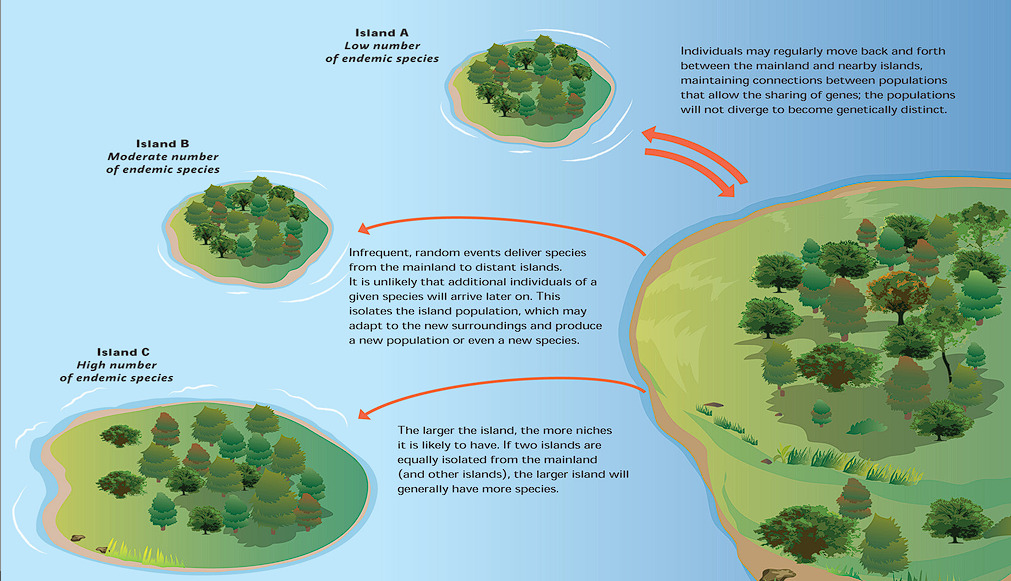
Isolation
Occurs when a group of organisms are separate by a physical or reproductive barrier.
How can Isolation increase genetic diversity?
Leading to speciation as organisms survive in their new environment organisms with mutations suitable for the environment survive and reproduce.
Formation of endemic species if they are geographically isolated and conditions are suitable.
How can Isolation decrease genetic diversity?
When a small population is isolated, this can lead to the founder effect.
When the limited gene pool reproduce, there are limited genes in the gene pool.
Isolation can also lead to inbreeding within the population.
If organisms are unable to adapt to the new environment this leads to them becoming extinct.
Impacts of Ecosystem Changes
Changes can destroy the habitats of organisms.
Changes have large effects on endangered organisms as their population is generally small.
This has a greater effect for organisms that are restricted to a small locality and endemic species (species that are only found in a specific location)
The loss of alleles and genetic diversity increases their risk of extinction as this decreases their ability to adapt to changing conditions.
These changes can also have affects on food chains as a reduction in one part of the food chain can reduce the population of other organisms that rely on that organism as a food source.